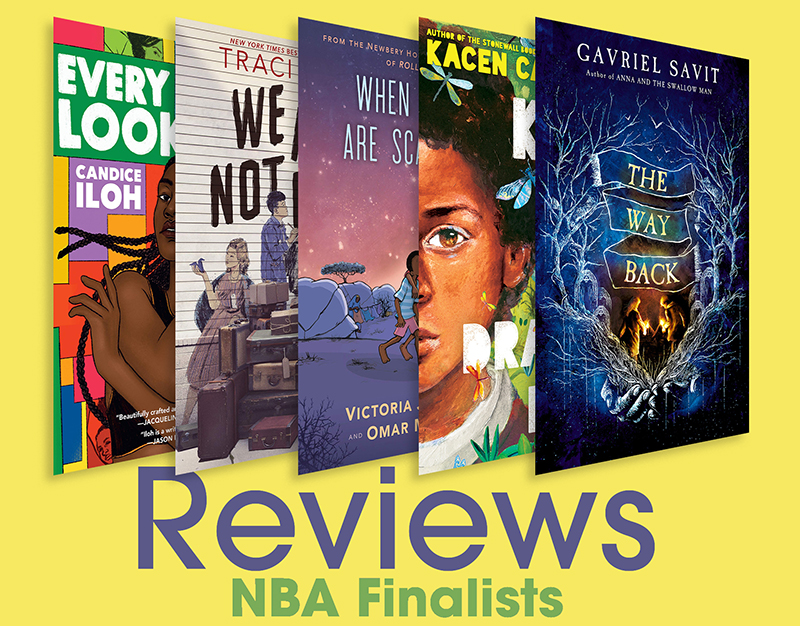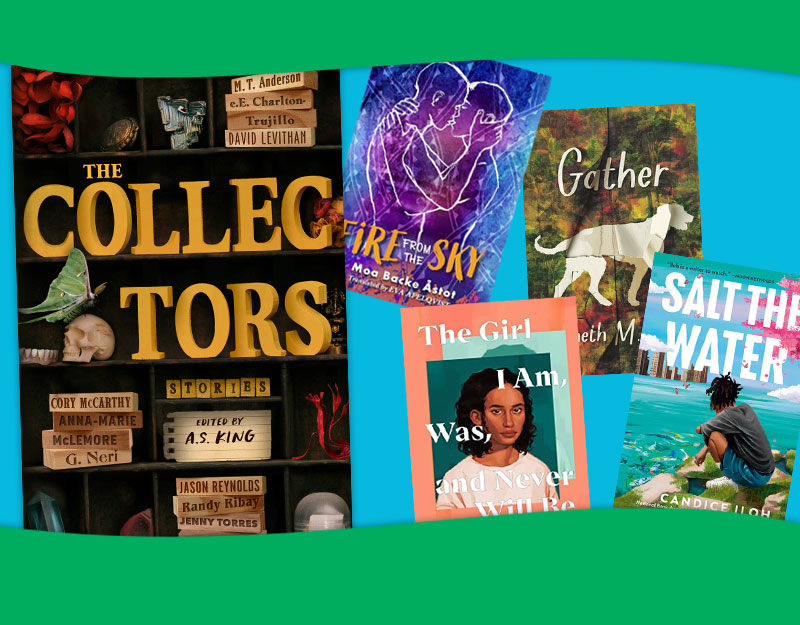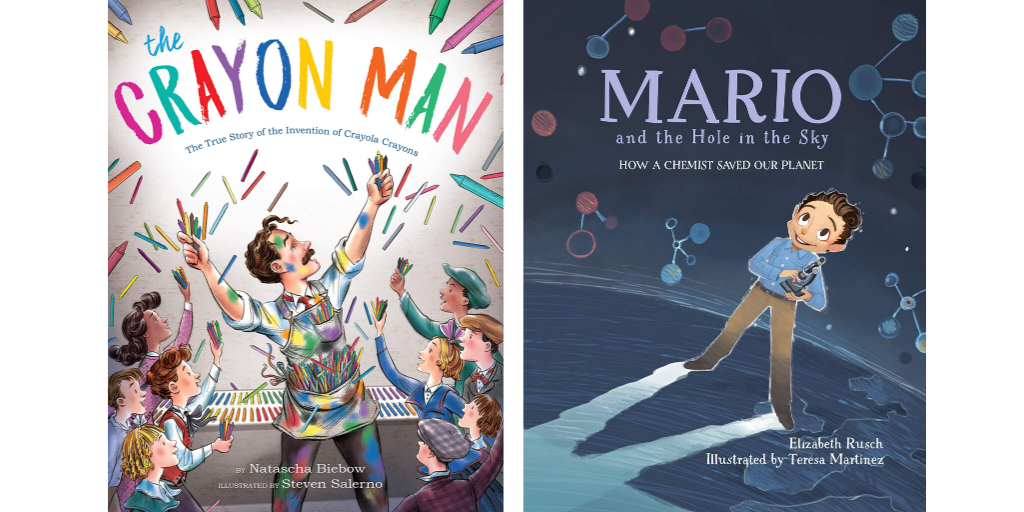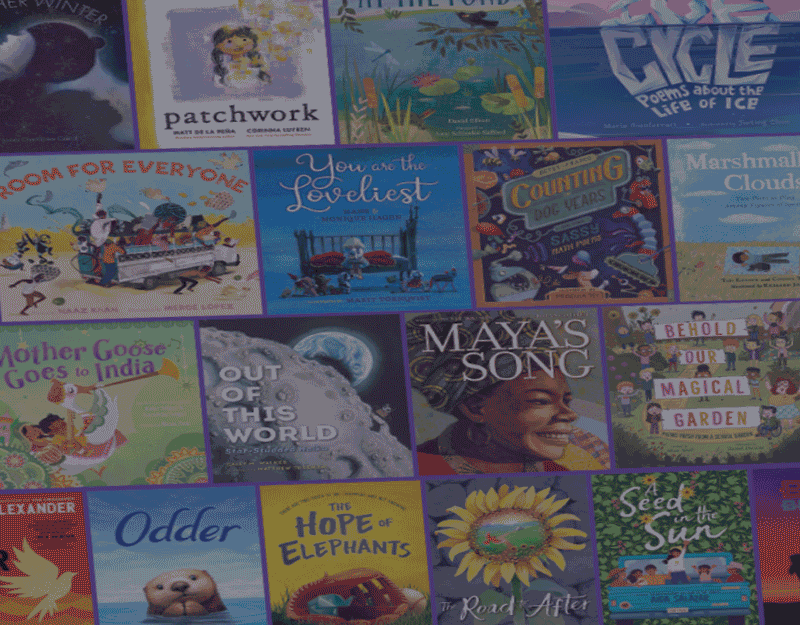Review of the Day: Impossible Creatures by Katherine Rundell, ill. Ashley Mackenzie

She’s the George R.R. Martin of middle grade fantasy, says School Library Journal. No. Wait. Scrap that. She’s actually reminiscent of Ursula Le Guin and Philip Pullman, says Publishers Weekly. No. No no, I’m still wrong because the Washington Post is saying she’s her generation’s J.R.R. Tolkien. Meanwhile you’ve The New York Times calling her “well nigh irresistible” and The New Yorker placing her in the echelons of C.S. Lewis. This would be Katherine Rundell, a British author of, amongst other things, children’s books, and who has always had a rather impressive following overseas while never quite breaking through with the Americans. That all changes now. When my parents write to me out of the blue asking me about a children’s book that they keep hearing about everywhere, you know it’s gotta mean something. As it happens, I’d been sitting on an advanced reading copy of Impossible Creatures, the book responsible for getting Rundell this impressive swath of fame, for several months now and was halfway through it when the heavens opened and the angels declared this book to be the title that would reinvigorate our middling middle grade sales. Now I’m writing a review of it, but the after the hype and praise from all those who have written about it before. Look, I’ll just spoil it for you right now, the book is perfectly nice. A decent middle grade fantasy with some keen lines and some solid, if occasionally squidgy, storytelling. I enjoyed reading it. Do I think it’s going to pump new life into fantasy for kids once more? Of course not. But it has some nice writing and a fun plot. Do we really need more than that?
We meet two children, right off the bat. There’s Christopher, who attracts animals, both wild and tame, without ever meaning to. Then there’s Mal, who is capable of flying (sometimes) thanks to a magical coat she received as a baby. Mal lives in a beautiful world called the Archipelago, where magical creature still exist. Christopher is part of a legacy of guardians who protect the link between our worlds. But the magical animals of the Archipelago are dying and no one knows why. Does it have something to do with Mal? Is that why people are trying to kill her? One thing’s for certain. Once Christopher crosses the border into her world, nothing will ever be the same.
ADVERTISEMENT
ADVERTISEMENT
“It was a very fine day, until something tried to eat him,” is a darn good first sentence. “It was a very fine day, until somebody tried to kill her,” is also a great follow-up. When it comes to descriptive sentences, Rundell is keen, and the opening of Impossible Creatures is perfect. No notes. She splits the narrative between the two characters, Christopher and Mal, and in doing so provides just enough information. Without saying it in so many words, you realize that Christopher is in our world and Mal is in a fantastical one. And that’s the devil’s bargain that Rundell must adhere to throughout the book. Fortunately, she has so much fun with descriptions, she hardly seems to care. Lionel Holbyne is described as “half criminal, half haircut.” When a character realizes they have to join our heroes and have no luggage they are told, “None of us do… That is, in general, the nature of adventures. Adventurers tend to smell.” A character that sews poorly is told they look, “like you’re trying to donate blood very, very slowly…” There is someone who, “kissed him on the cheek, hard, almost as hard as a bite.” And, one of my favorites, “Beauty is overrated, but it is not a sin.”
As I say, Rundell’s descriptions and turns of phrase are often matchless. However, due to the constraints of her audience’s attention spans (gone are the days when you could write a 500+ page tome for 10-year-olds and expect them to be on board with it) she is limited to a scant 368 pages. That means we get our fill of fairly cheap plot contrivances. The first of these occurs when Christopher decides to help Mal at the beginning of the story. Why? Because if he didn’t we wouldn’t have a story, obviously, but sadly the most Rundell is able to come up with (because he can’t passively be our hero – he must actively make that choice) is that it’s an adventure and he just kinda wants to. Later we get a similar situation with our character Nighthand. He’s dying, refuses to do anything about he, yet he’ll do anything Mal asks at this point. Even so, we need him in the narrative until a key moment. Then he leaves to get some medical assistance. As for the plotting of the book itself, it’s very A to B to C. Characters literally drop out of the sky with the one pertinent piece of information our heroes need to save the day. We meet odd creatures on a variety of different island, gathering items or assistance we need as we go. It’s more video game than “Twin Towers”, if you get my gist.
To hear the world tell it right now you’d be under the distinct impression that Rundell is the second coming of… well… Rowling. Indeed, a very clever acquaintance of mine thought to ask me, “Is this [the hype] just Rowling backlash?” Could be, though I wouldn’t necessarily say it was “just” that. But there does appear to be an interesting level of desperation in these ecstatic yelps. We’ve not had a superstar appear in the children’s or YA book world rise in a while, and that makes folks edgy. If we don’t have writing superstars then will the children even want to read at all?!? It’s been a long time since we had a Pullman/Riordan/Collins, after all. And with Rowling having gone all the way off the deep end with her toxic terf tweeting, folks are all kinds of conflicted on what bedtime fantasies they should be reading to their kids. Perhaps Rundell is the natural answer. From an origin story standpoint, her childhood is nicely peppered with grief, as outlined in the New Yorker article, Fly with Me: The children’s books of Katherine Rundell. She doesn’t have the I-wrote-the-whole-thing-in-a-coffee-shop backstory, but so few do. And best of all, she isn’t even ON Twitter/X!
Writing an original fantasy for kids often also means having to recycle some very old mythological creatures. That is just fine. Even the oldest or most hackneyed overdone creature (read: unicorn) can be reinvigorated in the hands of the right author. And not a single creature, that I could ascertain, in Impossible Creatures is original to Rundell. I was convinced that the ratatoskas were but nope! Apparently they’ve a penchant for running up and down the world tree Yggdrasil to carry messages. This is probably why they’re terrible gossips in Rundell’s version (one of many sly allusions for those up on their myths). Likewise, Rundell can’t escape comparisons to other fantasy works that are (ostensibly) for kids. Almost immediately I started thinking of Philip Pullman’s The Subtle Knife when I read this book. A boy in our world meets a fantastical girl from another with an otherworldly animal companion. He acquires a knife of unbelievable sharpness. The two of them travel together to save the world. It’s all there. But, again, that’s fine. Pullman, for all his charms, was academic in his fantasy writing. I’d hand him to the 11-year-olds who would come to my desk at the library declaring they’d read everything possible, wanting a bit of a challenge. He was not, however, and in spite of his popularity, really meant for younger kids. Rundell’s book, for all that it kills off beloved characters with a rapacity of an episode of Game of Thrones (hence that George R.R. Martin comparison School Library Journal gave her, I suppose), is still very kid-friendly. The chapters seem designed for bedtime readalouds. The plot is fairly good vs. evil simple. There is also plenty of action, howsoever you prefer it.
The problem, which I feel compelled to confess to you now, is that I already have my own preferred English, Oxford graduated middle grade fantasy writer that I know and love, and I like her more than Rundell. This is not exactly a fair thing to confess. I dare say there is room enough in this world for two female identifying fantasy authors in merry old England, but I suffer from a bit of jealousy, I suppose. It would be glorious if the heaps of honors Rundell is having could be split with Frances Hardinge though Do you really want inventive world building? Characters that will never leave a child’s mind? Incredible villains? A level of creativity most of us would kill to have even a smidgen of? Hardinge is the author you seek. No one can read A Face Like Glass or Cuckoo Song or The Lost Conspiracy and not be changed in some way. Granted, she usually writes a touch older than Impossible Creatures, though this year’s American release of the novella Island of Shadows is certainly more middle grade fare. But with the perfect knowledge that this all sounds like sour grapes (“How DARE the world enjoy the work of anyone besides MY favorite author!), I understand that Impossible Creatures has one significant advantage in today’s marketplace: Its damned simplicity.
The Narnia books are fairly simple. They don’t so much world building as just set up vague structures on which to hang fun adventure plots and the occasional foray into Christian allegory. But it’s not Rundell’s world building that I’ve a problem with. Indeed, she’s clearly put some thought into her fantasy land. As I read through Impossible Creatures I just wanted it to be a little more consistent in why things happened. Too often they feel like they’re following a prescribed plot laid out by an author who mapped all of this out a while ago. That can be annoying. At the same time, you truly do grow to like these creatures, these characters, and this world. Plus, as I mentioned, there are a lot of really neat sentences and turns of phrase dotting the text. So perhaps Rundell will be our next big star. Perhaps we’ll have midnight release parties and conferences in her name and an Archipelago at Walt Disney World. It all depends on the kids, of course. And kids? Would that we could map their likes and dislikes out in advance. Until we can, Impossible Creatures will be a beloved book to some, a merely nice one to others, and an interesting blip in the history of fantasy titles for children.
On shelves now.
Source: Galley sent from publisher for review.
Filed under: Review 2024, Reviews
About Betsy Bird
Betsy Bird is currently the Collection Development Manager of the Evanston Public Library system and a former Materials Specialist for New York Public Library. She has served on Newbery, written for Horn Book, and has done other lovely little things that she'd love to tell you about but that she's sure you'd find more interesting to hear of in person. Her opinions are her own and do not reflect those of EPL, SLJ, or any of the other acronyms you might be able to name. Follow her on Twitter: @fuseeight.
ADVERTISEMENT
ADVERTISEMENT
SLJ Blog Network
Tegan and Sara: Crush | Review
The Seven Bills That Will Safeguard the Future of School Librarianship
Take Five: Dogs in Middle Grade Novels
Gayle Forman Visits The Yarn!
ADVERTISEMENT








I’m not typically a fantasy reader. My brain has trouble staying on topic and not falling down rabbit holes to figure out what’s the author’s world building vs. what’s the “established” mythology and how do you learn the established mythology. It’s absolutely a me problem. I have found myself reading that spicy Hunger Games with dragons book that’s oh so popular right now though. Where should I start with Frances Hardinge? Or other fantasy titles?
Oo. Where to start is such a good question. Skinful of Shadows is an excellent feminist one, but I personally am a huge fan of A Face Like Glass or Cuckoo Song.
Betsy, I appreciate your thoughtful critique of Katherine Rundell’s work, especially since it has now become so popular in the U.S. I would like to point out that the Narnia books are not examples of “an occasional foray into Christian allegory;” the are completely informed by Christian belief. That is their very essence. I’m certainly not suggesting that people shouldn’t read them if they don’t share those beliefs. Readers might be interested in Laura Miller’s “The Magician’s Book: A Skeptic’s Adventures in Narnia.” As for the other fantasy authors you mention, I agree with some of your criticisms. I would hesitate to recommend that we decide what to read to our kids based on the author’s opinions. You should definitely alert your child to the beliefs you find repellent and explain why. Otherwise, you will have very little left that passes this test.
Well, I have to say I’m not surprised by your review. I’ve wondered how any book could live up to the many breathless claims made about it.
But I’m still left wondering: What led so many different critics to over-hype it? Is everyone just dying to have a blowout MG fantasy novel?
I mean, you take a look at that possibility but then seem to put it down again. So what is it?
I take it up pretty much to put it down, I’d say. She’s good! There’s no denying it. Not as good as someone like Hardinge, but she’s fun. I don’t think she’s our savior though. But who knows? Maybe this book will sell like hotcakes and start a revolution.
I have only read one book by Frances Hardinge, and I thought it was terrific. I did feel it was aimed at older readers – more YA than juvenile, and I have the sense that her other books are similar – complicated plots, complex characters, fairly long, somewhat adult in tone. Since I have only read one book, I may be wrong (and should not offer my opinion…)
However, I have read quite a few of Katherine Rundell’s books – because I have read one glowing review after another – and many of them have been as good as described (as you note, her descriptions and turns of phrase are excellent). I LOVED Rooftoppers and thought Cartwheeling in Thunderstorms was deeply affecting. Rundell does write successfully in a variety of genres (including an adult biography for which she received yet another reward!) I agree that her latest is not her best (convoluted plot).
I think Rundell and Hardinge are, so far, writing different types of books. It’s hard to say who’s “better” at this point!
So interesting to hear your thoughts! It was huge here in the UK this last school year. I saw Rundell speak at Hay Festival and she was a wonderful speaker and has very interesting writing processes. My daughters both loved her. (My 10 year old’s class read Impossible Creatures in school, so she was already a fan.) My 10 year old begged me to read it so we could discuss it. I thought it was good, but definitely not the type I just couldn’t put down. There were definitely some parts that were a slog and I had to convince myself to push through for my daughter’s sake. I also admit my reading it after having heard her speak about it changed the experience. It was interesting to hear how she built the world and researched all the mythological creatures before I read it. I don’t think her love and obsession around these mysterious creatures really came out in the story and it would have been better if it had. I love your observation that it felt like it was “following a prescribed plot laid out by an author who mapped all of this out a while ago.” That’s it exactly. It didn’t feel like magic. It felt planned. The hype around her is fascinating. I honestly wouldn’t have paid attention to her if my daughter hadn’t loved the book, so I guess that’s what counts.
I am reading it with my middle school home school students — eight of them of every variety you can imagine. We are about 40 pages in, although I did read the entire book before bringing it to class. I don’t understand the super hype but it is fun reading with my group. They are neuro spicy, as they say, and this has fun pieces on almost every page to dish up for another look.
I do wish Rundell was a little more careful with her pronoun/antecedent work. It is often hard to tell who the “he” or “she” or “they” is in the breathless description of an action scene.
My youngsters love it. As fans of adventure and fantasy video games, this book step into novels. Time will tell.
Precisely my thoughts as well! Time will tell. But there’s no denying it’s popularity with the kids (and that’s no small thing).